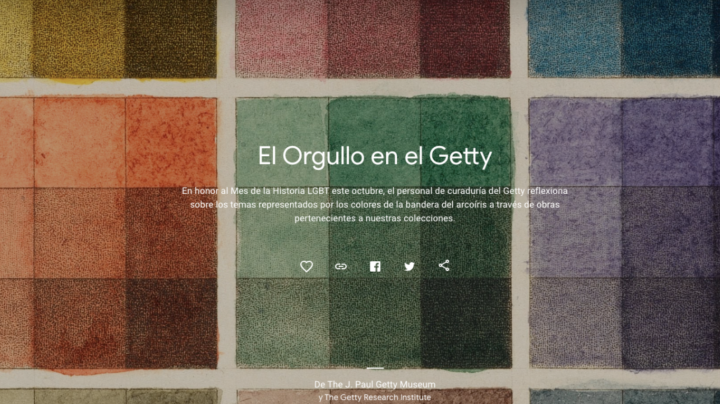

In honor of National Hispanic Heritage Month, which takes place from September 15 to October 15, five of Getty’s most popular online exhibits on Google Arts & Culture will now be permanently available in Spanish as well as their original English. The move is part of an effort on the part of the Los Angeles museum to make its collections more accessible to online visitors; according to the US Census Bureau, 48.6% of LA County identifies as Hispanic. There are plans for additional translations of Getty’s Google exhibits in the near future. In order to view the collections in Spanish, viewers must make it their language preference under browser settings.
The five collections newly available in Spanish are a survey of Irises in fine art, including works by Vincent van Gogh and others, as well as a lesson in the mythic history of the flower; a collection of Getty works celebrating LGBTQ Pride; a focus on Medieval and Renaissance depictions of Balthazar, a Black African King; a recently-acquired group of Japanese-American photos; and an examination of Edgar Degas’ artistic methods through a close-study of his pastel drawing of a ballerina.

Getty has been a partner to Google Arts & Culture for a decade. Previously, the pair collaborated on Art Transfer, which turns photos into works of art; Art Projector, an augmented reality tool that allows users to project a masterpiece into their home; and Pocket Gallery, a life-size virtual exhibition space housed within a mobile phone.
The online format offers a dynamism that enables engagement with the Getty’s collection not only from afar, but also in closer detail than is sometimes afforded by an in-person viewing experience. As the pandemic-related closures of many cultural institutions demonstrated, it is important to find ways to make the vast cultural holdings of museums readily accessible via virtual platforms — and now in more languages.


0 Commentaires